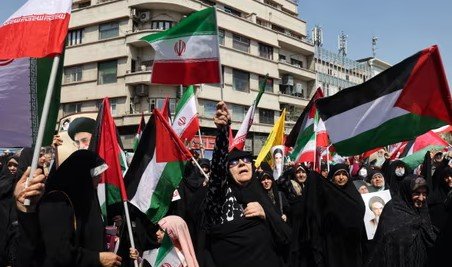India Winds Down Evacuation As West Frets Over Short-Term Nuclear Setback
The fighting has stopped—for now. After two harrowing weeks of missile barrages, airstrikes, and international brinkmanship, Iran and Israel have agreed to a ceasefire, brokered through backchannel diplomacy led by the U.S. and Qatar. But the silence in the skies is not mirrored underground, where nuclear tensions still simmer.
India, caught between diplomacy and duty, has begun wrapping up its evacuation of nationals from Iran. Yet even as the crisis cools, questions remain: Was anything really solved? And what comes next?
A Welcome Pause—But No One’s Celebrating Just Yet
The Indian government’s response was measured but unmistakably relieved. The Ministry of External Affairs issued a statement within hours of the ceasefire news, acknowledging “deep concern” while welcoming the cessation of violence. No grand proclamations. Just quiet, diplomatic pragmatism.
There was a sense of unfinished business in the wording.
One senior Indian official, speaking off-record, said: “We’re glad to see calm return, but this isn’t over. Not by a long shot.”
The ceasefire came after U.S. stealth bombers hammered suspected nuclear sites across Iran over the weekend, with Israel reportedly focusing on the human element—scientists, researchers, and technicians deemed critical to Iran’s atomic ambitions.

Intelligence Reports Paint a Murky Picture
Hours after Donald Trump claimed victory and a decisive rollback of Iran’s nuclear program, multiple U.S. intelligence assessments quietly contradicted him. The strikes had slowed Iran’s progress, yes—but not by much.
According to early briefings reported by Reuters and AP:
-
Iran’s program may have been set back by only “a few months.”
-
The most significant damage came from targeted assassinations of 14 Iranian nuclear scientists.
-
Despite bombings, key infrastructure and uranium stockpiles are thought to have survived.
A former CIA analyst told the AP, “You can bomb buildings and labs. But unless you take out the brains behind the operation, the knowledge lives on.”
That’s exactly what Israel believes it has done. An Israeli diplomat in Paris even described it as “decapitating the program.”
But others aren’t so sure.
India’s Calculated Diplomacy: Between Two Fires
For New Delhi, the Iran-Israel standoff was a geopolitical migraine. On one side, strategic ties with Israel. On the other, decades of civilizational and economic relationships with Iran. Add to that India’s investment in the Chabahar port and the roughly 8,000 citizens in Iran when conflict broke out—things were delicate, to say the least.
The Indian Embassy in Tehran quickly moved to set up evacuation desks, hotline numbers, and safe travel advisories. Over 3,200 Indians were flown out on charter flights, according to officials.
One sentence summed up the cautious optimism: The contact desk for new evacuation names is now closed.
Tehran Bleeds, But Still Breathing
The cost to Iran isn’t just nuclear. Civilian morale, scientific assets, and basic infrastructure all took hits. Tehran’s streets are quieter now, but far from normal. State TV aired grainy footage of missile fragments and cratered labs as nationalistic chants played in the background.
But even those close to the regime admit: This round was painful.
Some key Iranian labs, like those in Natanz and Fordow, sustained partial damage. Yet there’s no confirmation that centrifuge operations were completely halted.
Iran’s underground facilities are notoriously hard to destroy. One Israeli analyst called them “like termites—resilient, hidden, and always rebuilding.”
And the world knows this story isn’t new. It’s a replay of the 2010s: sabotage, delay, recover, repeat.
America’s Mixed Signals
Trump’s own narrative has been all over the place. In public, he declared that Iran’s nuclear capability was “wiped out.” In private, according to intelligence leaks, the Pentagon is far more reserved.
One DIA (Defense Intelligence Agency) source told Reuters bluntly: “We can’t say what survived, but we know something did.”
Meanwhile, political messaging continues. Trump was nominated for the Nobel Peace Prize this morning by a far-right European lawmaker. The irony isn’t lost on observers, given his role in triggering the confrontation to begin with.
Washington’s next steps remain unclear.
Will there be more strikes? Will inspectors be allowed back in? Is diplomacy even possible anymore?
Nobody knows for sure.
What Lies Ahead: Strategic Setbacks, Not Strategic Ends
Despite all the explosions, the takeaway is coldly sobering. Nuclear programs are resilient. You can delay them. You can disrupt them. But dismantling them? That’s another level.
Here’s a simplified breakdown from recent intelligence estimates on nuclear delay timelines:
| Action Taken | Estimated Delay to Iran’s Program |
|---|---|
| Sabotage (2020 Natanz explosion) | 6-9 months |
| Cyber attack (Stuxnet, 2010) | 12 months |
| Assassinations (Scientists, 2020–2025) | 3–6 months |
| June 2025 U.S.-Israel strikes | 3–4 months |
Military action can throw sand in the gears. But it rarely removes the engine.
For Now, India Watches—and Waits
With most of its citizens safe and its diplomats back in full swing, India is back to playing a careful observer. There’s chatter about boosting trade through Chabahar again. There’s also a wary eye on whether this ceasefire will stick.
The region has seen too many “truces” unravel before breakfast.
So, while evacuation flights slow down and embassies resume their consular hours, the bigger question still hovers like a drone above the desert: Did this ceasefire buy peace, or just time?
